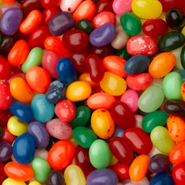Posted 14 December 2009
New EU food label to warn against hyperactivity in children based on inaccurate consumption levels, say scientists
EU regulation (EC) No. 1333/2008 due to come into effect in January 2010 which imposes labeling restrictions on 6 food colours in the fight against hyperactivity among children is based on unrealistically high levels of additive consumption, according to new research.
The survey findings by University College Dublin scientists, published in the journal Food Additives and Contaminants, claims that children in the Republic of Ireland would never reach the consumption levels required for these food additives to induce hyperactivity.
“We strongly recommend that the risk assessment process which led to this legislation be urgently reviewed,” says Professor Mike Gibney, Director of the UCD Institute for Food and Health at University College Dublin, who headed up a consortium of Irish Universities including University College Cork and the University of Ulster.
“Quite simply, no child in our survey of Irish children and teenagers came even remotely near the doses used in the Southampton University study which has informed the introduction of this new EU additives labeling,” continues Professor Gibney.
The consumption levels set by the Southampton University study meant that a child between 7-10 years old would have to consume 4 x 56g bags of sweets per day to reach the required exposure levels. According to Professor Gibney that would mean that half the daily calories of these children would have to come from sweets. “The reality is that the figure is less than 10%,” he says.
EU regulation (EC) No. 1333/2008 stipulates that any food on sale in the European Union which contains particular food additives (Sunset Yellow, 30 Carmoisine, Tartrazine, Ponceau 4R, Allura Red, and Quinoline Yellow) – be labeled from January 2010 to indicate that these additives “may have an adverse effect on activity and attention in children.”
The article entitled: Pattern of intake of food additives associated with hyperactivity in Irish children and teenagers was published in Food Additives & Contaminants (Taylor and Francis) on 11 December 2009. The journal publishes original research papers and critical reviews covering analytical methodology, occurrence, persistence, safety evaluation, detoxification and regulatory control of natural and man-made additives and contaminants in the food and animal feed chain.
(Produced by UCD University Relations)

